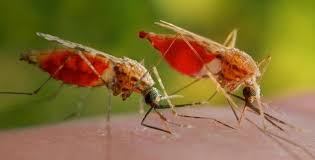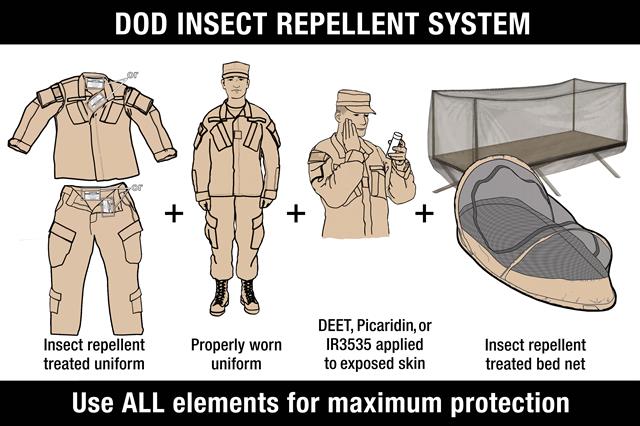O'nyong-nyong Virus

|
Anopheles gambiae and Anopheles funestus mosquitoes are thought to
be the main vectors of O'nyong-nyong virus. Photo: James Gathany, CDC
|
How do people become infected with O'nyong-nyong virus?
O'nyong-nyong virus is spread to people by the bite of an infected
Anopheles mosquito. These are the same mosquitoes that spread malaria. Anopheles gambiae and
Anopheles funestus are the main vectors of O'nyong-nyong virus. These mosquitoes are active at night.
What are the signs and symptoms of an O'nyong-nyong virus infection?
Common symptoms include high fever, crippling joint pain, rash, swollen lymph nodes, eye pain, red eyes with no discharge, chest pain, and general malaise. The symptoms can be misdiagnosed as Chikungunya virus. The infection will usually resolve on its own. Some patients experienced prolonged joint pain during the recovery phase. No fatal cases have been reported.
Is there a diagnostic test available to confirm O'nyong-nyong virus infection in humans?
Yes, your healthcare provider may order blood tests for O'nyong-nyong or other viruses with similar symptoms. See your healthcare provider if you have recently traveled to affected areas and have developed the symptoms described above.
Is there treatment for O'nyong-nyong virus infection?
There is no vaccine or cure for O'nyong-nyong virus; however, the disease will eventually resolve on its own without treatment. Supportive care can be provided to alleviate symptoms. Persons experiencing O'nyong-nyong virus symptoms should seek advice and care at a medical treatment facility.
What should I do if I think I am infected with O'nyong-nyong virus?
Seek medical attention if you experience the symptoms described above and have traveled to an area where O'nyong-nyong virus occurs. Be sure to tell your healthcare provider your recent travel history. If you think you have O'nyong-nyong virus, avoid mosquito bites to prevent the virus from spreading to others.
What can I do to reduce my risk of becoming infected with O'nyong-nyong virus?
The best way to prevent diseases spread by mosquitoes is to protect yourself from mosquito bites by using the DoD Insect Repellent System. It incorporates insect repellent on the uniform, DEET, picaridin, or IR3535 repellent on exposed skin, a properly worn uniform, and sleeping inside a insecticide-treated bed net.
Select the image for more information on the DoD Insect Repellent System.

